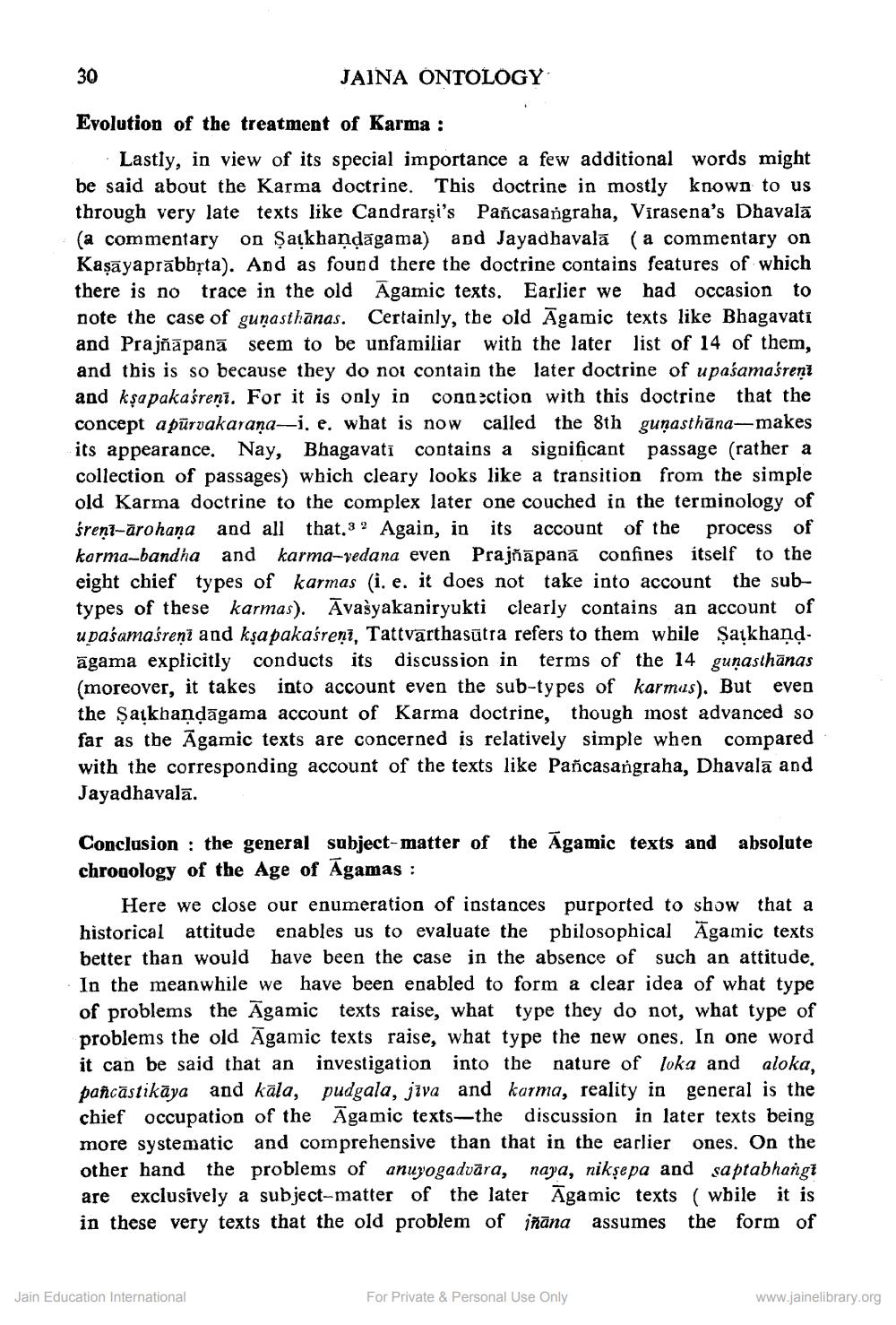________________
30
JAINA ONTOLOGY
Evolution of the treatment of Karma :
Lastly, in view of its special importance a few additional words might be said about the Karma doctrine. This doctrine in mostly known to us through very late texts like Candrarşi's Pancasangraha, Virasena's Dhavala (a commentary on Satkhaņdāgama) and Jayadhavală (a commentary on Kaşayaprābbrta). And as found there the doctrine contains features of which there is no trace in the old Agamic texts. Earlier we had occasion to note the case of gunasthānas. Certainly, the old Āgamic texts like Bhagavati and Prajñāpanā seem to be unfamiliar with the later list of 14 of them, and this is so because they do not contain the later doctrine of upaśamasrent and kșa pakaśreni. For it is only in connection with this doctrine that the concept a pūrvakarana--i. e. what is now called the 8th gunasthāna-makes its appearance. Nay, Bhagavati contains a significant passage (rather a collection of passages) which cleary looks like a transition from the simple old Karma doctrine to the complex later one couched in the terminology of śreni-ārohana and all that. 32 Again, in its account of the process of korma-bandha and karma-vedana even Prajñāpanā confines itself to the eight chief types of karmas (i, e. it does not take into account the subtypes of these karmas). Āvasyakaniryukti clearly contains an account of upaśamasreni and kşa pakaśreni, Tattvarthasūtra refers to them while Şarkhand agama explicitly conducts its discussion in terms of the 14 gunasthānas (moreover, it takes into account even the sub-types of karmus). But even the Satkhandāgama account of Karma doctrine, though most advanced so far as the Agamic texts are concerned is relatively simple when compared with the corresponding account of the texts like Pancasangraha, Dhavala and Jayadhavala.
Conclusion: the general subject-matter of the Āgamic texts and absolute chronology of the Age of Agamas:
Here we close our enumeration of instances purported to show that a historical attitude enables us to evaluate the pbilosophical Agamic texts better than would have been the case in the absence of such an attitude. · In the meanwhile we have been enabled to form a clear idea of what type
of problems the Agamic texts raise, what type they do not, what type of problems the old Āgamic texts raise, what type the new ones. In one word it can be said that an investigation into the nature of loka and aloka, pancāstikāya and kala, pudgala, jiva and karma, reality in general is the chief occupation of the Āgamic texts—the discussion in later texts being more systematic and comprehensive than that in the earlier ones. On the other hand the problems of anuyogadvāra, naya, niksepa and saptabhangt are exclusively a subject-matter of the later Āgamic texts (wbile it is in these very texts that the old problem of jñāna assumes the form of
Jain Education International
For Private & Personal Use Only
www.jainelibrary.org




